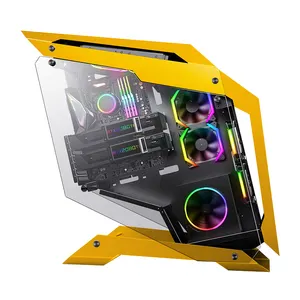
All categories
Featured selections
Trade Assurance
Buyer Central
Help Center
Get the app
Become a supplier















Khám phá các kệ trực tuyến trên Alibaba.com ốp chơi game. với các hạt khoáng mịn để tăng thêm tính bền vững và sức mạnh cho các công trình. Kiểm tra trực tuyến các loại cát rời khác nhau, bao gồm cát xây, cát bẫy, cát bê tông, v.v. từ các nhà cung cấp khác nhau. Người mua sắm có thể khám phá ốp chơi game. với nhiều kích thước, màu sắc và kết cấu khác nhau và đặt hàng với số lượng lớn hoặc số lượng ít tùy theo quy mô của dự án.
Khi xử lý các dự án bê tông, hãy khám phá sự lựa chọn phong phú của hố màu đỏ cam cát có các hạt góc cạnh và sắc nhọn không chứa muối. Đối với các công trình xây trát và các công trình xây dựng tương tự, người mua nên chọn loại sỏi sông màu xám trắng với các hạt chất lượng mịn và tròn. Người mua hàng cũng có thể xem xét bãi biển và sỏi biển hoặc sỏi nhân tạo hoặc sỏi sản xuất với các hạt mịn hơn, lý tưởng cho các dự án xây dựng khác nhau.
Các nhà quản lý dự án và chủ sở hữu bất động sản có thể mua sắm trên Alibaba.com để mua ốp chơi game. có các loại với hạt thô, mịn, rất thô, trung bình và rất mịn. Các loại cát được bán bao gồm các đặc tính và cường độ khác nhau, đồng thời không chứa tạp chất hoặc đá có thể ảnh hưởng đến độ bền của dự án. Hãy xem xét các loại cát nhân tạo với kích thước hạt có thể kiểm soát và không chứa tạp chất được pha chế để xây dựng các tòa nhà không có khuyết tật một cách kinh tế.
Alibaba.com cũng cung cấp dịch vụ cạnh tranh ốp chơi game. trên các nguồn đá sỏi được tạo ra từ thạch anh công nghiệp chất lượng cao tự hào có các đặc tính cơ học vượt trội và độ nén tuyệt vời. Mua sắm từ các nhà cung cấp khác nhau để đặt hàng vật liệu xây dựng đáp ứng các tiêu chuẩn cao về chất lượng. Các lựa chọn phong phú về cát xây dựng được bán được cung cấp với giá cả phải chăng cho người mua bán buôn và bán lẻ.